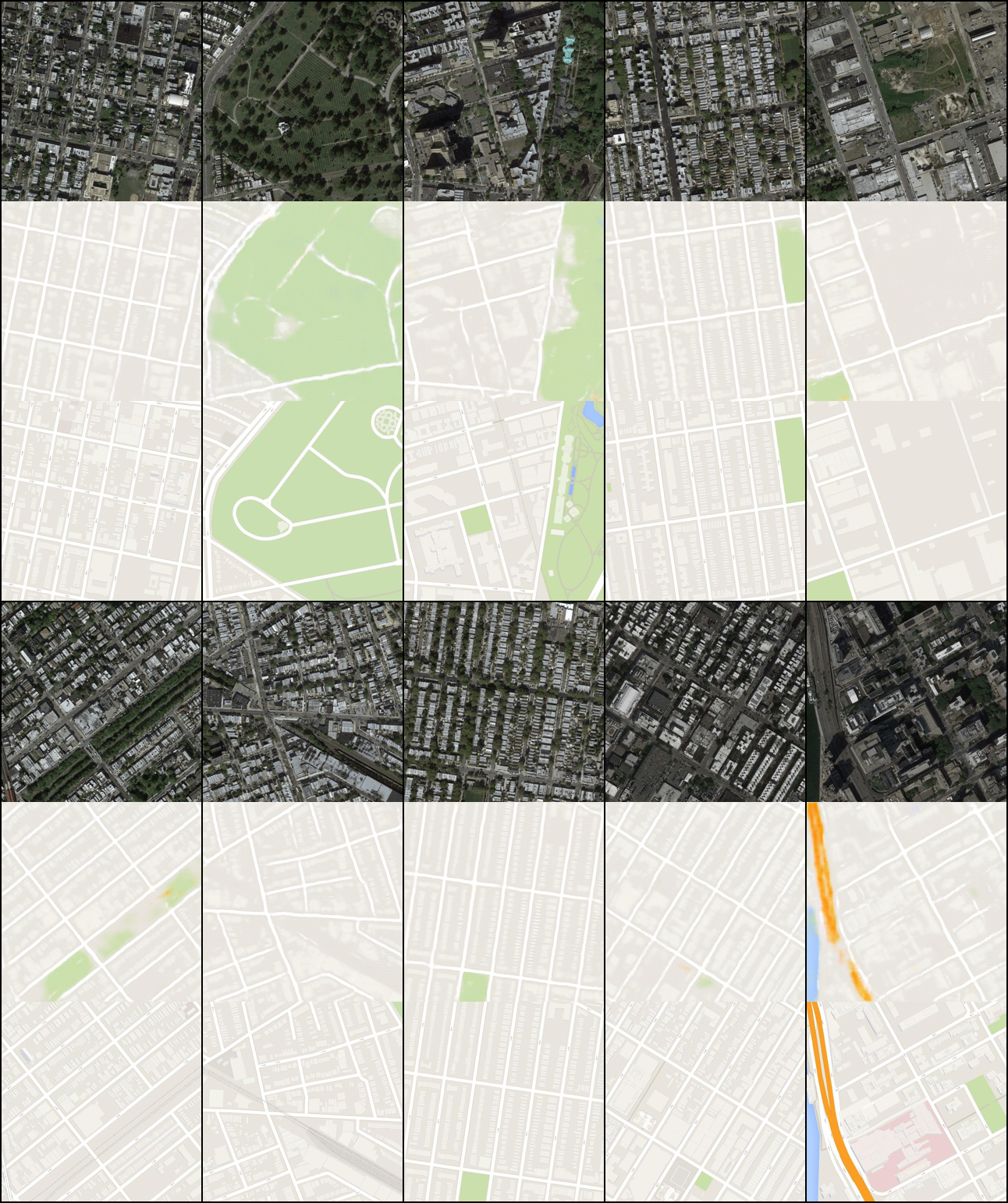Train Pix2pix on your custom data
This folder contains a script to train pix2pix for conditional image generation, leveraging the Hugging Face ecosystem for processing data and pushing the model to the Hub.
The script leverages 🤗 Datasets for loading and processing data, and 🤗 Accelerate for instantly running on CPU, single, multi-GPUs or TPU, also supporting fp16/mixed precision.

Pix2pix trained on the huggan/maps dataset to translate satellite images into maps à la Google Maps. First row: input, second row: prediction, third row: ground truth.
Launching the script
To train the model with the default parameters (200 epochs, 256x256 images, etc.) on huggan/facades on your environment, first run:
accelerate config
and answer the questions asked about your environment. Next, launch the script as follows:
accelerate launch train.py
This will create local "images" and "saved_models" directories, containing generated images and saved checkpoints over the course of the training.
To train on another dataset available on the hub, simply do (for instance):
accelerate launch train.py --dataset huggan/night2day
Make sure to pick a dataset which has "imageA" and "imageB" columns defined. One can always tweak the script in case the column names are different.
In case you'd like to tweak the script to your liking, first fork the "community-events" repo (see the button on the top right), then clone it locally:
git clone https://github.com/<your Github username>/community-events.git
and edit to your liking.
Training on your own data
You can of course also train on your own images. For this, one can leverage Datasets' ImageFolder. Make sure to authenticate with the hub first, either by running the huggingface-cli login command in a terminal, or the following in case you're working in a notebook:
from huggingface_hub import notebook_login
notebook_login()
Next, run the following in a notebook/script:
from datasets import load_dataset
# first: load dataset
# option 1: from local folder
dataset = load_dataset("imagefolder", data_dir="path_to_folder")
# option 2: from remote URL (e.g. a zip file)
dataset = load_dataset("imagefolder", data_files="URL to .zip file")
# optional: remove "label" column, in case there are no subcategories
dataset['train'] = dataset['train'].remove_columns(column_names="label")
# next: push to the hub (assuming git-LFS is installed)
dataset.push_to_hub("huggan/my-awesome-dataset")
You can then simply pass the name of the dataset to the script:
accelerate launch train.py --dataset huggan/my-awesome-dataset
Pushing model to the Hub
You can push your trained generator to the hub during training by specifying the push_to_hub flag, along with a model_name.
accelerate launch train.py --push_to_hub --model_name pix2pix-facades
This is made possible by making the generator inherit from PyTorchModelHubMixin available in the huggingface_hub library.
Citation
This repo is entirely based on Erik Linder-Norén's PyTorch-GAN repo, but with added HuggingFace goodies.